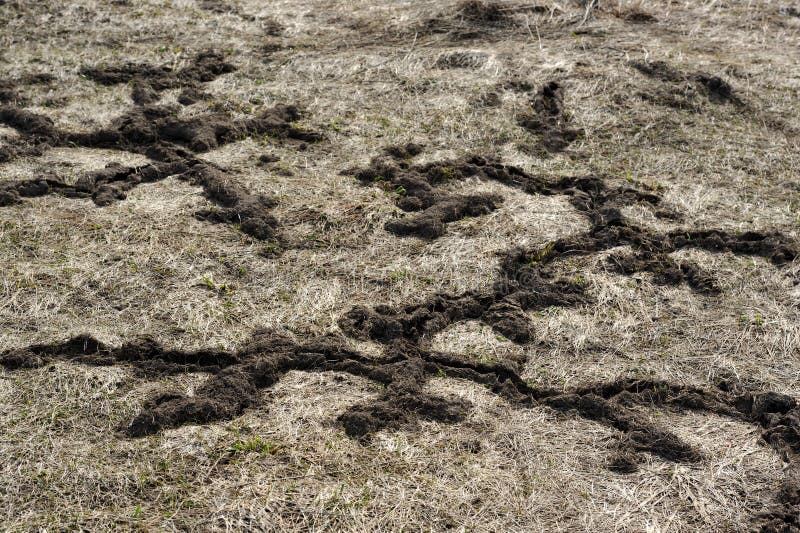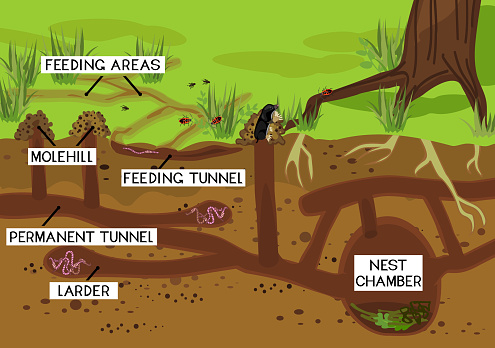Molecular Tunnel Photograph by Girosciencescience Photo Library Biology Diagrams Typically, only two to three moles will share the same tunnel system. They require a large territory to find sufficient food. 14. Do moles reuse their tunnels? Moles create a system of deep, more permanent tunnels that they reuse. They also create temporary surface runs for feeding. 15. What does a mole-infested yard look like? A yard with mole

The long snout also helps moles to locate their foods easily. The large, curved claws on the toes of their front feet are adapted for burrowing and they can dig underground tunnels as long as 18 cm in just one hour. Behavior Moles are solitary creatures from the day they leave their mothers, only coming together at mating periods. It finds food by running along its tunnels and eating up any earthworms, beetle larvae, slugs etc, which have fallen from the walls. A mole probably eats at least half its own body weight a day. When earthworms are plentiful, during autumn and winter, the mole makes stores of them, biting off their heads and pushing them into the ground for

Facts, Pictures, Diet, Character ... Biology Diagrams
MANAGEMENT OF MOLES y Victoria Wallace and Alyssa Siegel-Miles, Uonn Extension Moles play an important role in the ecosystem food chain, serving as both predators and prey. They are a common staple in the diets of hawks, owls, and snakes. Moles are insectivores that feed on invertebrates, primarily earth-worms and insects (including grubs). Moles create two types of tunnels: Surface Tunnels - These shallow, raised tunnels just beneath the grass indicate feeding areas where moles hunt for earthworms, grubs, and insects. Deep Burrows - These are more permanent living quarters, dug deeper underground, often leading to nesting chambers and food storage areas. Signs of Mole Damage
Generally, they grow to be 6 to 8 inches long including their tail. Moles use their front claws for digging their tunnels. They create their tunnels continuously and may not use the same tunnel for twice. They prefer to spend most of their time alone underground into their tunnel. They create tunnels mainly in order to search for their foods.

How Moles Dig: Understanding Their Underground Tunnels and Damage to ... Biology Diagrams
Moles construct intricate underground tunnels that serve multiple purposes, including feeding, nesting, and navigation. These tunnels are a hallmark of mole activity and often reveal their presence in lawns and gardens. Physical Characteristics: Larger than moles, with external cheek pouches for carrying food. Behavior: Create deep tunnels

Moles are primarily carnivores, subsisting mainly on earthworms, grubs, and other insects that live in the soil. They spend most of their lives underground, digging extensive tunnel systems in their search for food. These tunnels are often close to the surface and can cause raised ridges in your lawn, which are the most common sign of a mole

